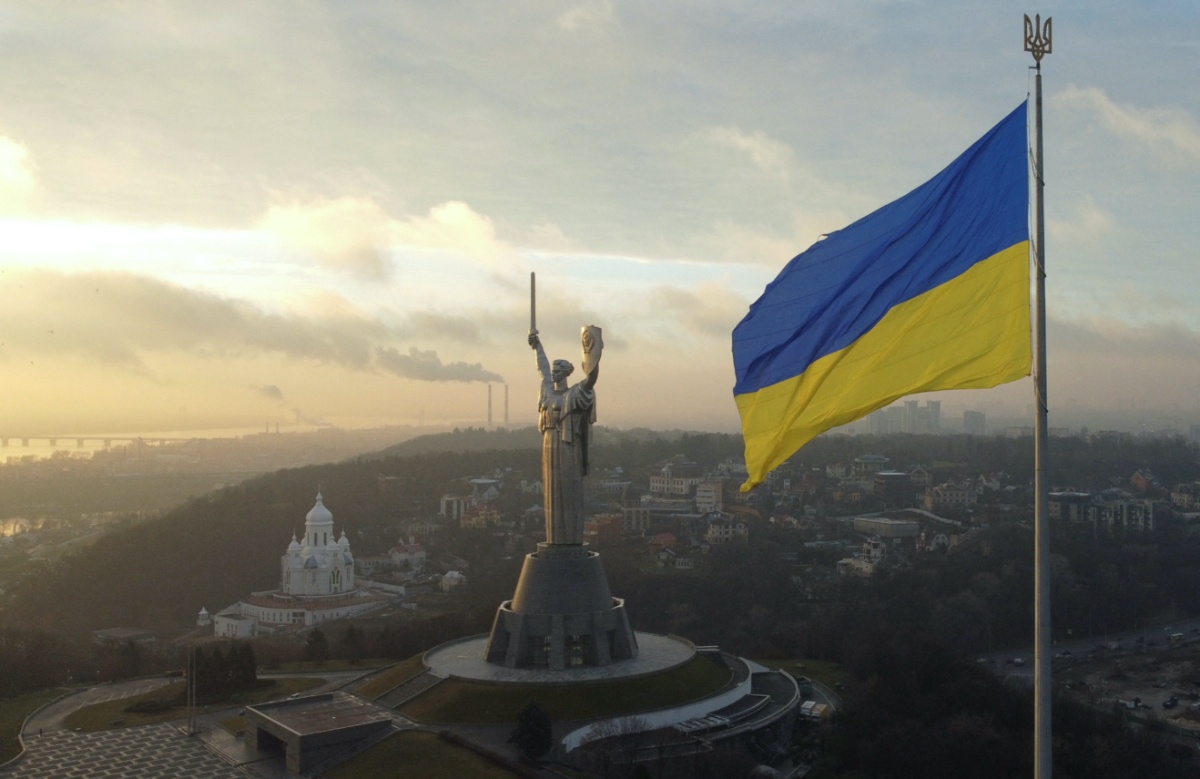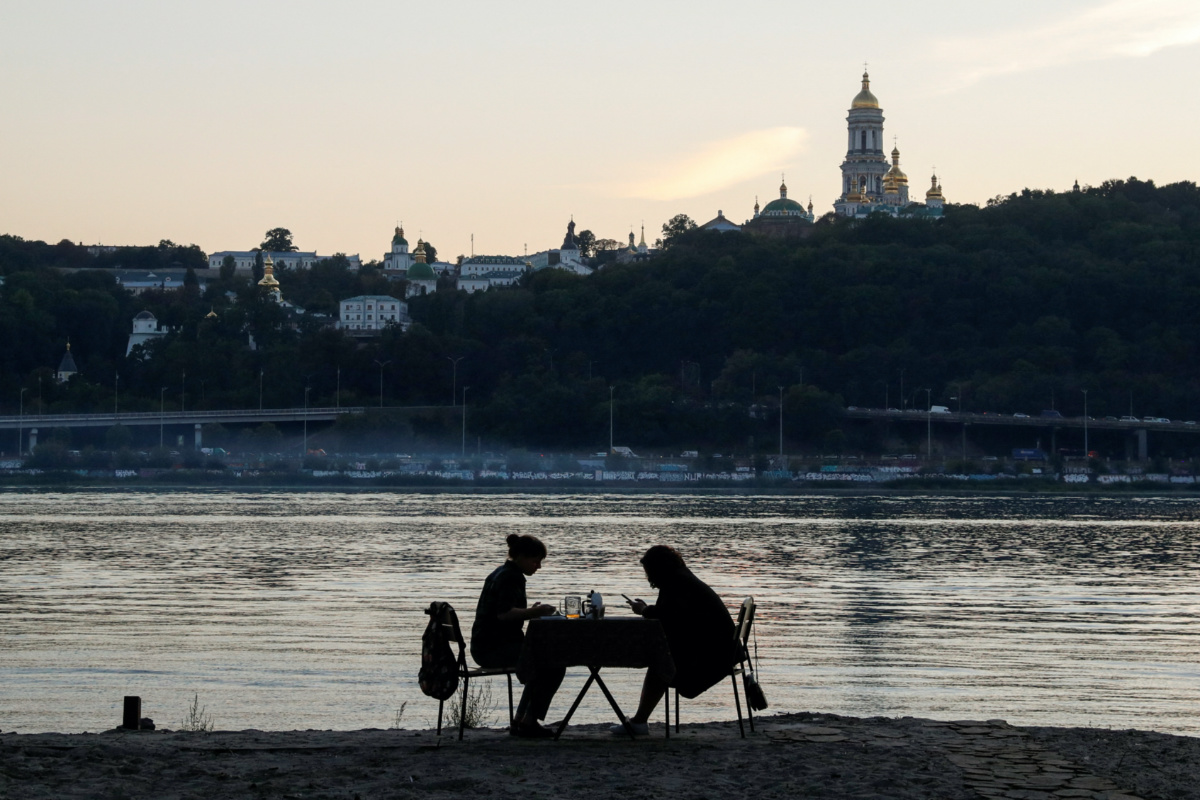Dnipro, Ukraine
Reuters
When war broke out seven years ago in eastern Ukraine, Hanna Teryanik volunteered with her husband and friends to transport wounded government troops to and from hospital.
The soldiers fighting against Russian-backed separatists were a motley, ill-equipped bunch, recalled Teryanik, 45, who now works as a research scientist at a war museum in the Ukrainian city of Dnipro.

Ukraine’s biggest national flag on the country’s highest flagpole and the giant ‘Motherland’ monument are seen at a compound of the World War II museum in Kyiv, Ukraine, on 16th December. Picture taken with a drone. PICTURe: Reuters/Valentyn Ogirenko
These days, she believes, they are a much tougher and more professional outfit.
“When we came to the hospital to pick up servicemen, we saw their ragged trousers, scorched uniforms, combat boots with the bottoms torn off and reattached using scotch tape,” Teryanik said in an interview with Reuters.
“You won’t see anything like that now. Volunteer battalions who resembled World War II partisans wearing European and American second-hand uniforms – that doesn’t exist any more.”
We rely on our readers to fund Sight's work - become a financial supporter today!
For more information, head to our Subscriber's page.
Spent ammunition rounds, clapped-out armoured vehicles and shrapnel-pocked road signs are among the war mementoes on display at the museum in Dnipro, some 250 kilometres from the rebel stronghold of Donetsk. Whole walls are filled with the photographs of fallen Ukrainian soldiers.
What started in 2014 with Russia’s invasion of Crimea and the seizure of large parts of eastern Ukraine by the separatists is threatening now to escalate into a wider war, with Ukraine saying 92,000 Russian troops are positioned near its border.
Russia denies planning an invasion but accuses Ukraine of staging provocations and gearing up to try to seize back the rebel-held lands by force – something Kyiv, in turn, rejects.
“For me, the war continues. What the next stage will be, I don’t know. This stage may probably be even more intense. But we are ready. We have no doubts any more who the enemy is,” said Dmytro Povorotnyi, 50, a military chaplain who recently returned from a month with government forces in the east.
While Ukraine’s armed forces of more than 200,000 servicemen are less than a quarter the size of Russia’s, they have been significantly boosted since 2014 by Western military aid, including supplies of US Javelin anti-tank missiles and Turkish drones.
“We have learnt how to use weapons – the enemy taught us to use weapons during the past seven years, and to fight,” Povorotnyi said. “People are confident and ready to fulfil all the tasks that will be set for the armed forces. Society is ready too.”

Women have their dinner on the Dnipro River bank in Kyiv, Ukraine, on 10th September. PICTURE: Reuters/Valentyn Ogirenko/File photo.
Dnipro, the main city in a region of 3.1 million people, was seen by many Ukrainians as an island of stability in the east when the conflict first broke out. Its hospitals treated many wounded soldiers and the regional governor at the time, Igor Kolomoisky, offered cash bounties to servicemen for capturing “saboteurs” or liberating occupied public buildings.
Today, thoughts of war are not far from residents’ minds.
“If the conflict escalates and it’s unsafe to stay here, I will most likely leave,” said Anna Hutor. “I am not a military specialist. I will not be able to help, on the contrary I will probably get in the way.”
Oleksandr Shabalin said: “If Russia attacks Ukraine, I will most likely stay and help the Ukrainian army, I will do everything I can.”
Museum researcher Teryanik said despite her faith in the Ukrainian army she was worried about whether local people were well prepared.
“Do you know, for example, where a bomb shelter is located in the city? I don’t. I think if we ask people on the streets, they won’t know either../There are many children, there are many elderly, people with special needs. What should they do if something starts?”
Many people think nothing will happen and talk of war is just “fairy tales”, she said. “But we have seen the same fairy tales in 2014.”
– Additional reporting by MARGARYTA CHORNOKONDRATENKO.






